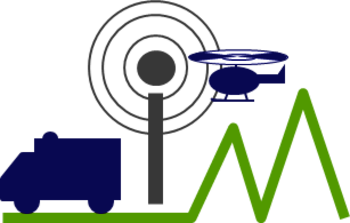
Initial situation
By health care reforms and the introduction of the EU-wide emergency number 112 the whole rescue seector stands in front of big challenges.
In all changes and reforms especially in the field of emergency rescue but also in patient transports, the quality and the targeted service on the patient are even in the future of vital importance. Therefore it is necessary that all application participating jointly define and implement an optimal structure and procedure.
From the point of view of the rescue system, the Bavarian-Tyrolean border area is characterized by the following points which significantly increase the complexity of the rescue system:
1. high tourist share
2. great differences in settlement density
3. additional need of mountain rescue
4. additional need for water rescue
5. additional need of air rescue by topologically challenging terrain
6. Bordering areas to Tyrol and thus coordination of completely different rescue structures
These points increase the complexity of the rescue still further.
Definition and objective of the project
The aim of the project is to present the entire process chain of emergency rescue and ambulance transport and to optimize the changing framework conditions.
The core area of the investigation covers the following areas:
• City of Rosenheim: rescue directing centre
• Country Rosenheim
• Country Miesbach
• Country Tirol: emergency services country Tirol
In addition the interface considerations were also included:
• Country Mühldorf a. Inn
• Rescue directing centre Traunstein
• Country Ebersberg
• Rescue directing centre Erding
• Country Salzbur: rescue services country Salzburg
The beginning of the process chain is the “information of the rescue service”, the end of the process chain is the “appropriate transfer and reception of a corresponding facility”.
Not only the “single emergency cases” but also the “mass incidents of injured persons and sufferers” considered. Disasters are not part of this project.
The following components are analyzed:
- The actual procedure (patient care)
- All interfaces between the parties involved in the process
- The flow of information
- The actuality of the data
- The billing procedures
- Possibilities of the innovative use of technical tools
Conclusion and outlook
In order to maintain and improve the quality or rescue operations in the border area, even under the rapidly changing conditions, it is necessary to analyze the existing processes and to improve them in a transnational working group and adept them to the new conditions. The cooperation of all relevant groups ensures that the optimization cannot be conceptualized and implemented locally but also via problematic interfaces.
By using the new introduced standards such as Galileo or the Bavarian concept of the integrated control centers this project also enables the application of these new developments to be tested in the short term and transferred to practice. This project is thus also an important component for the introduction of these new technologies and concepts which can then be applied very quickly to a larger area.
Project duration
May 2005 - September 2007
